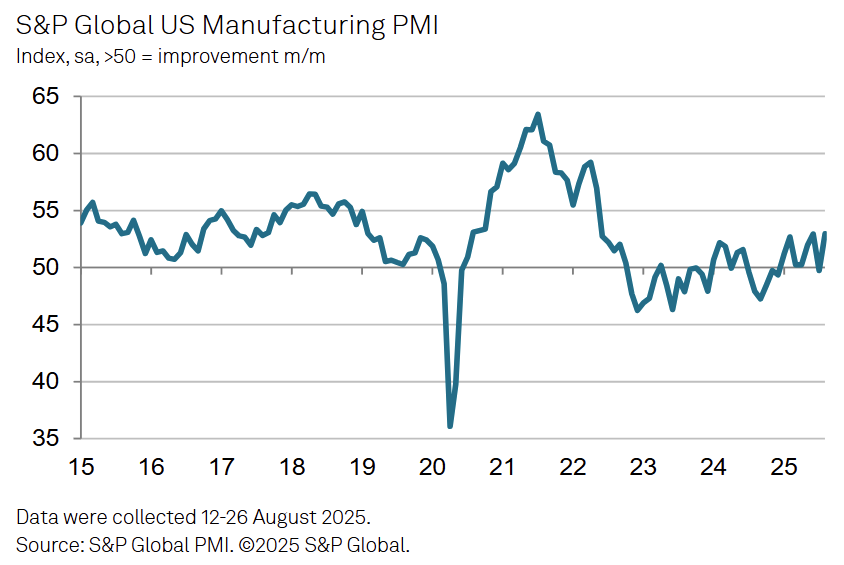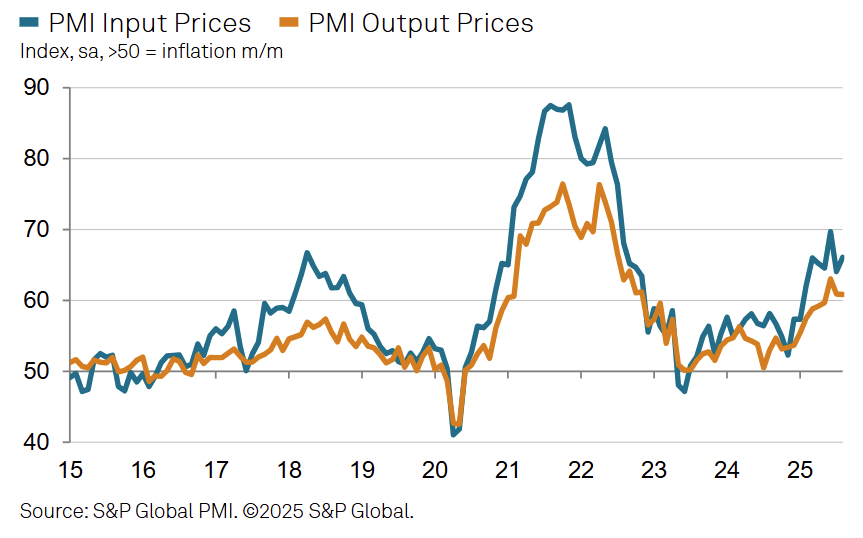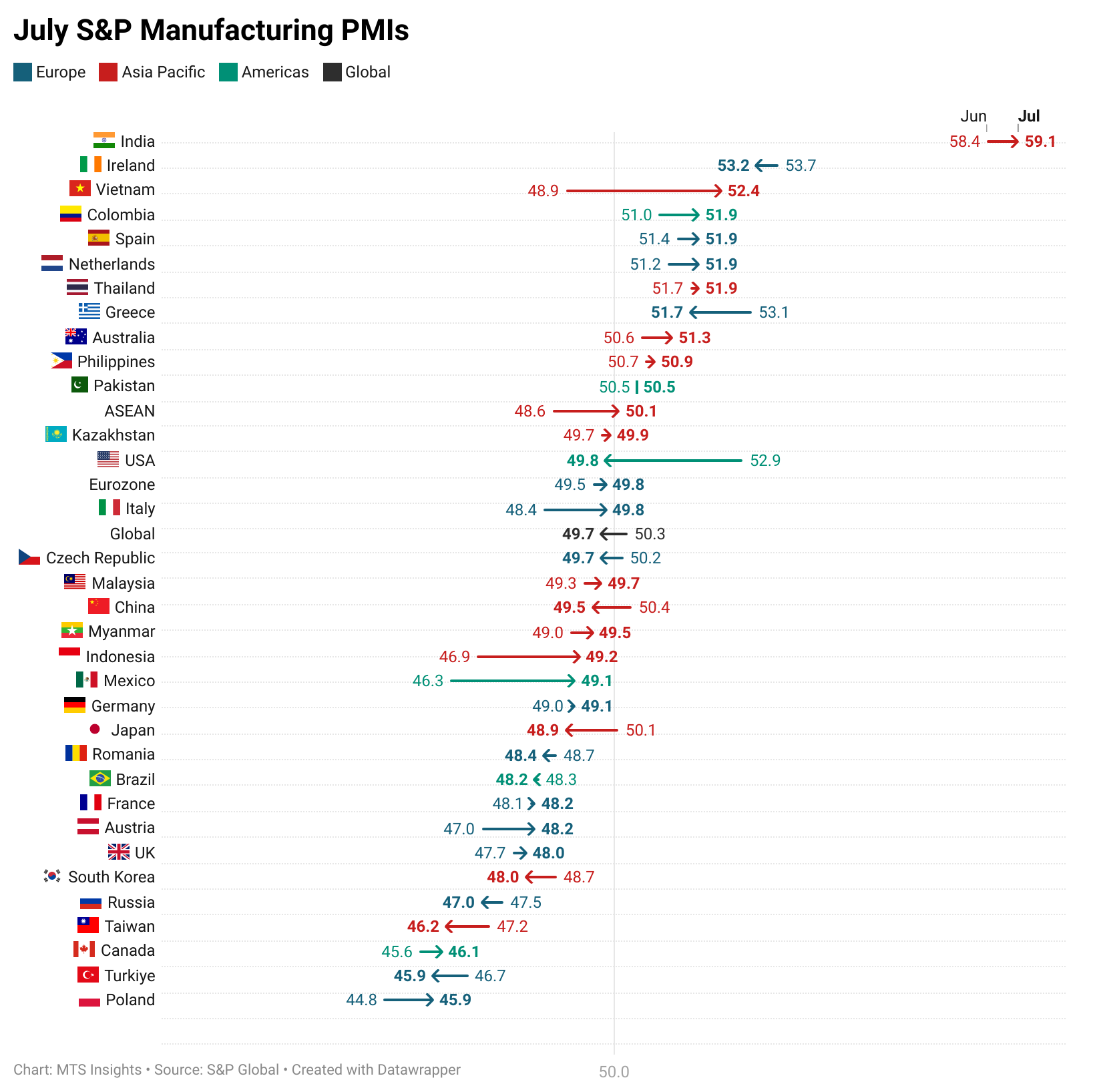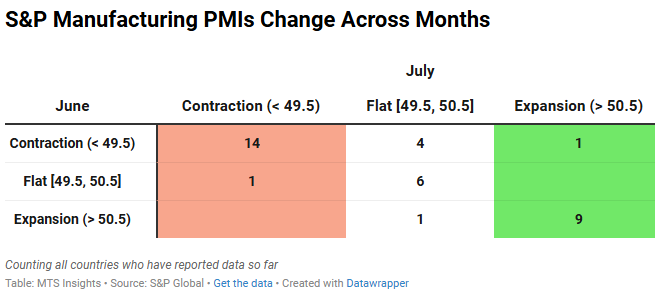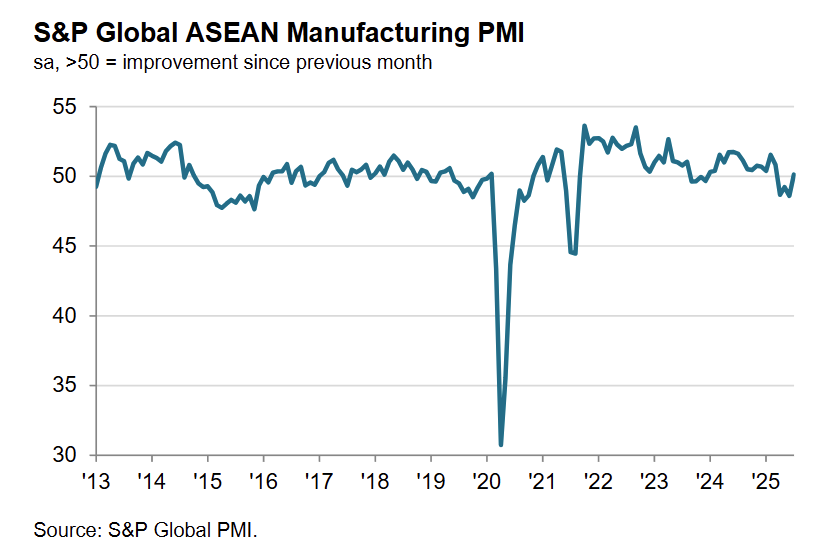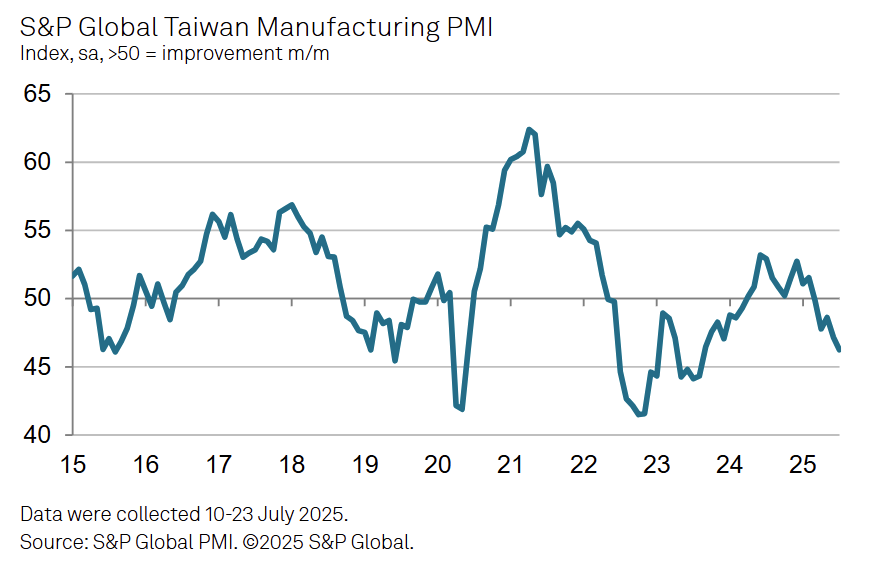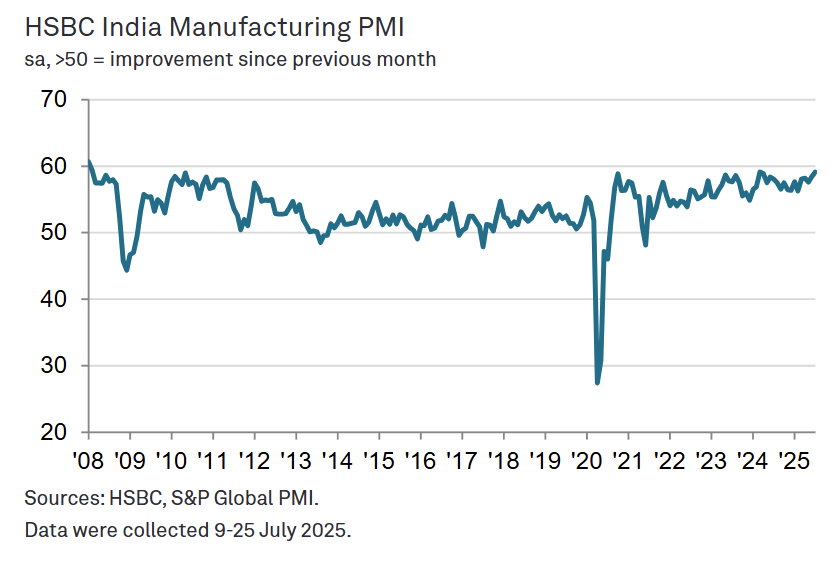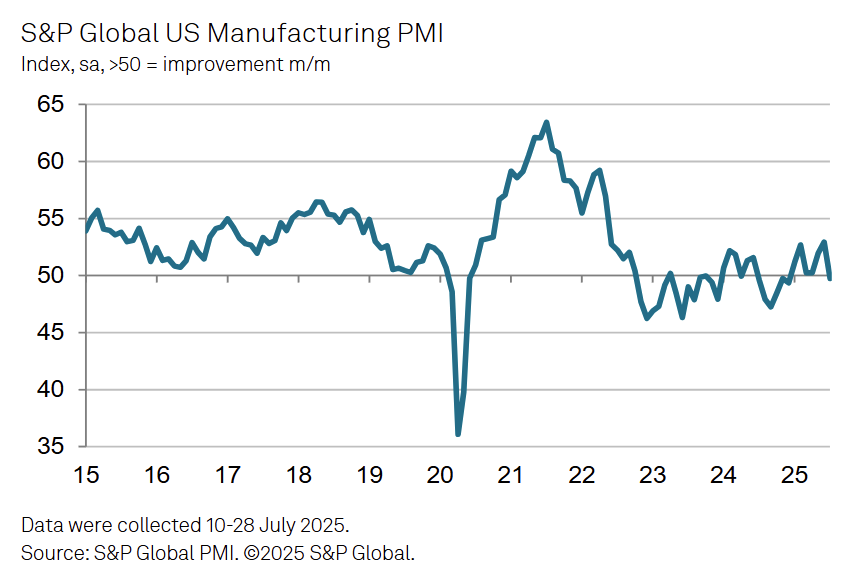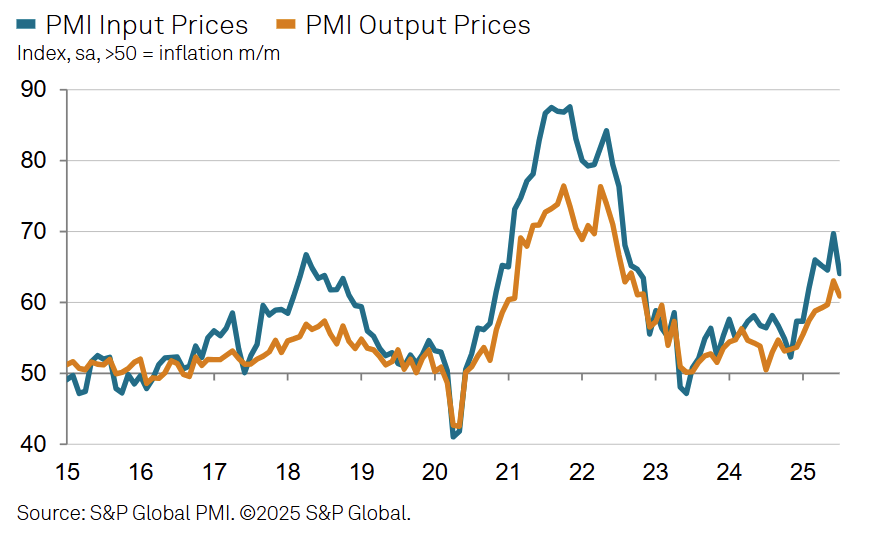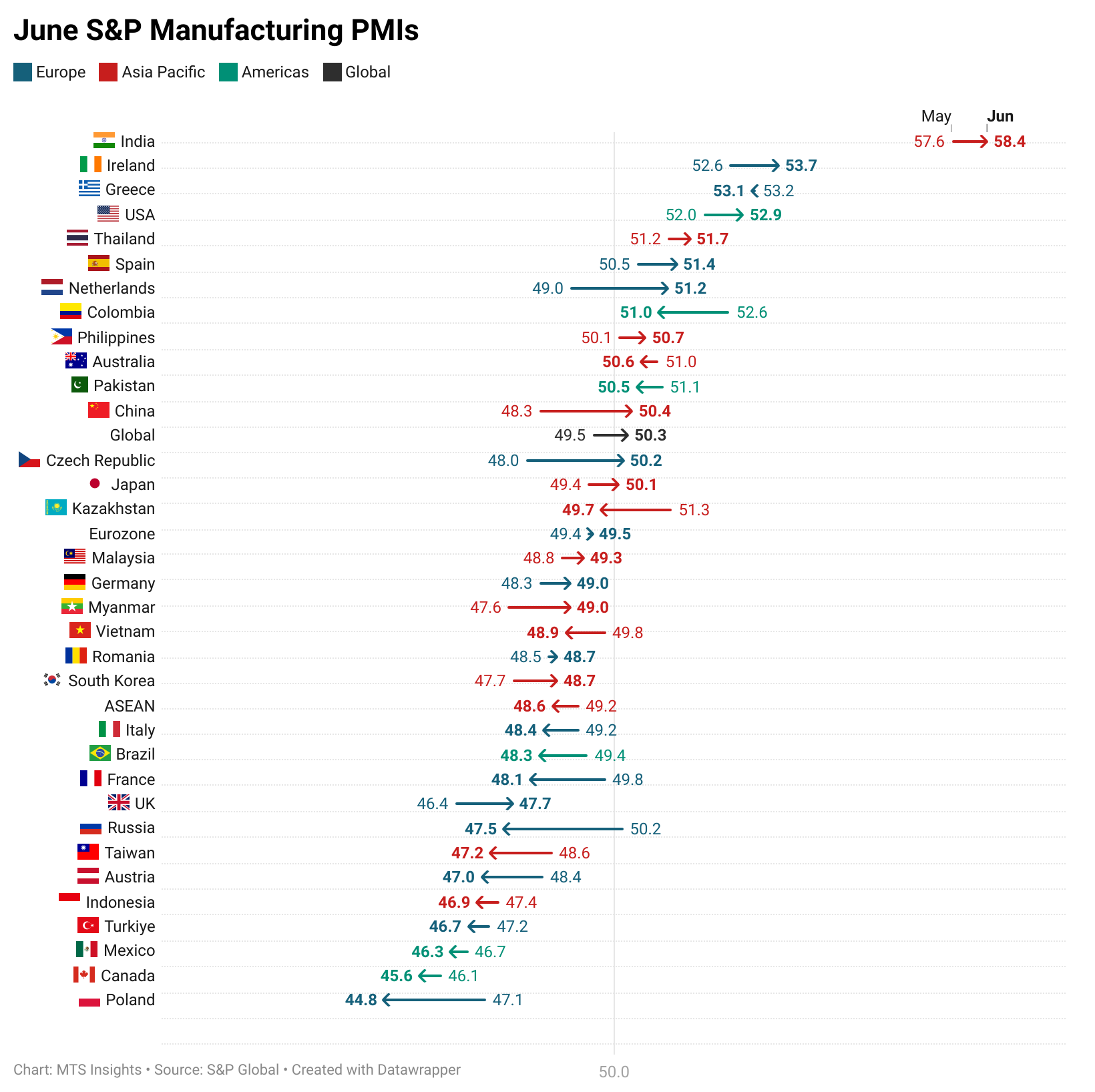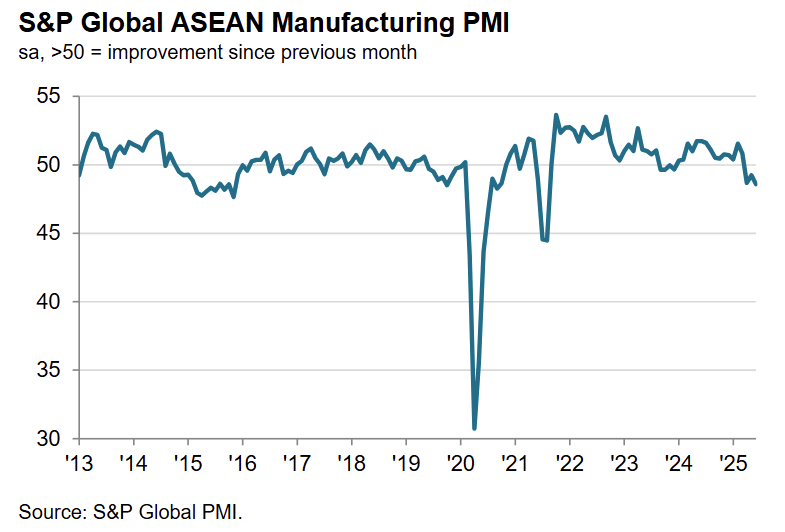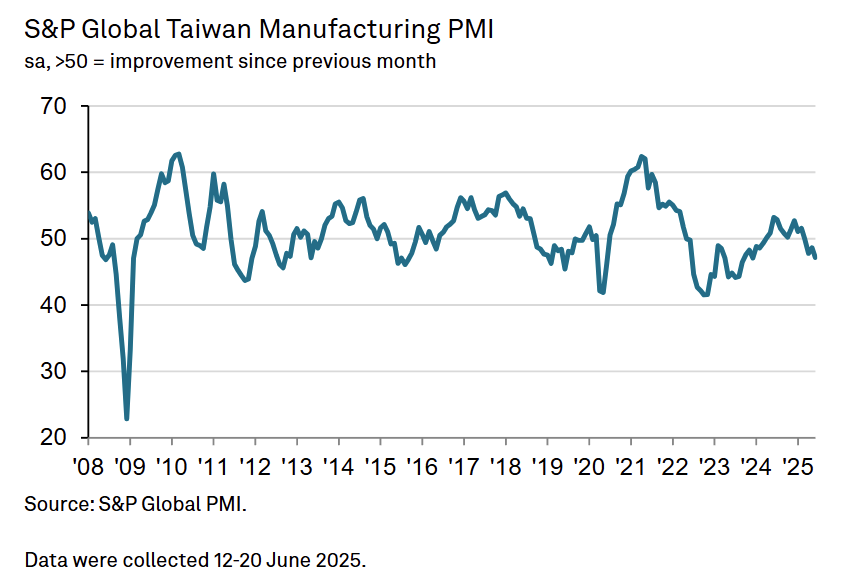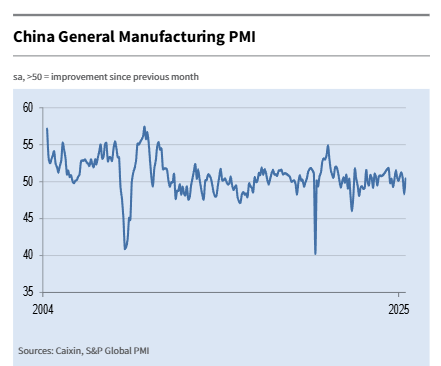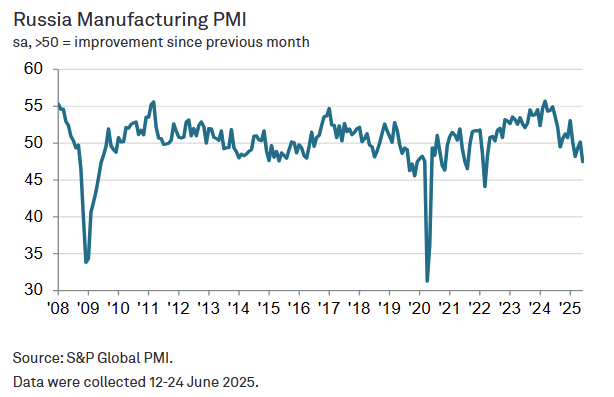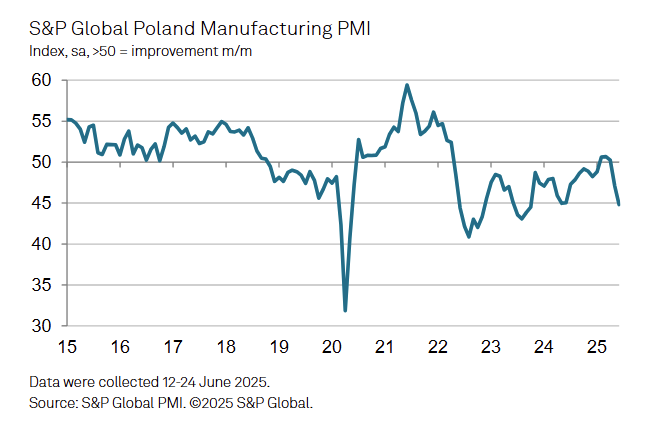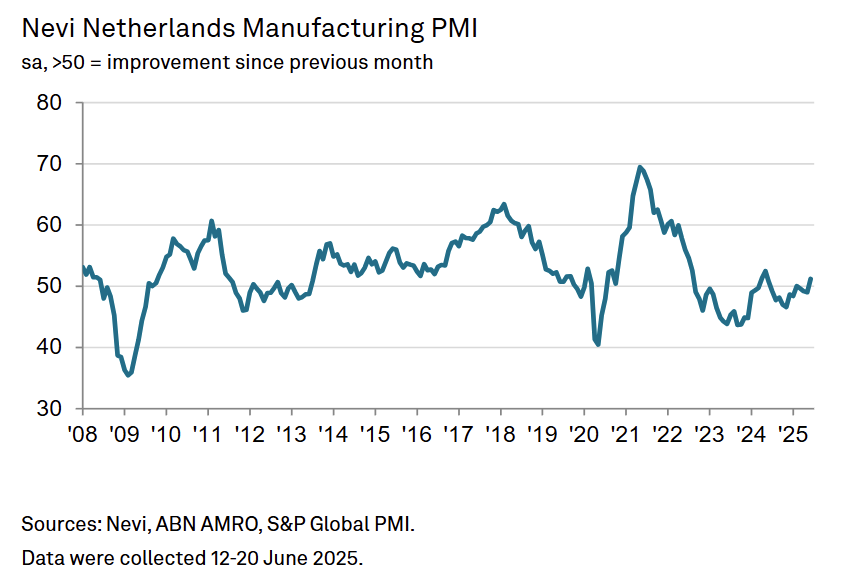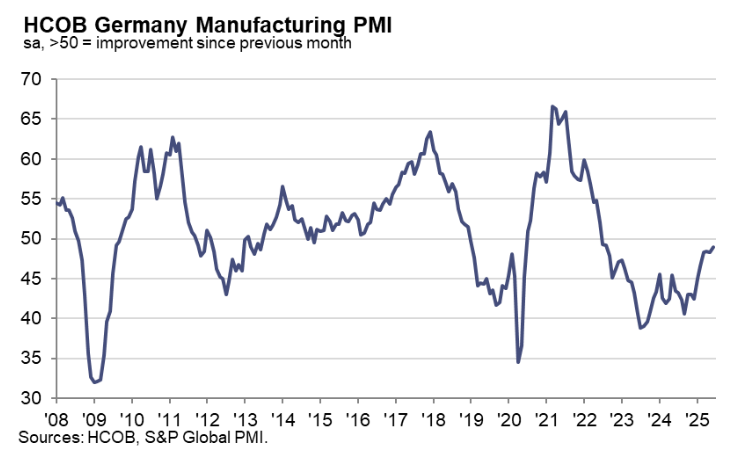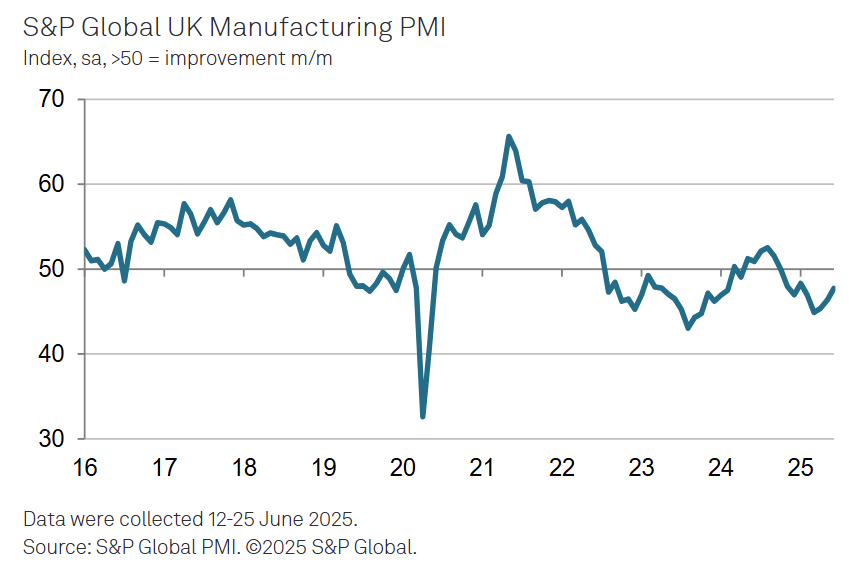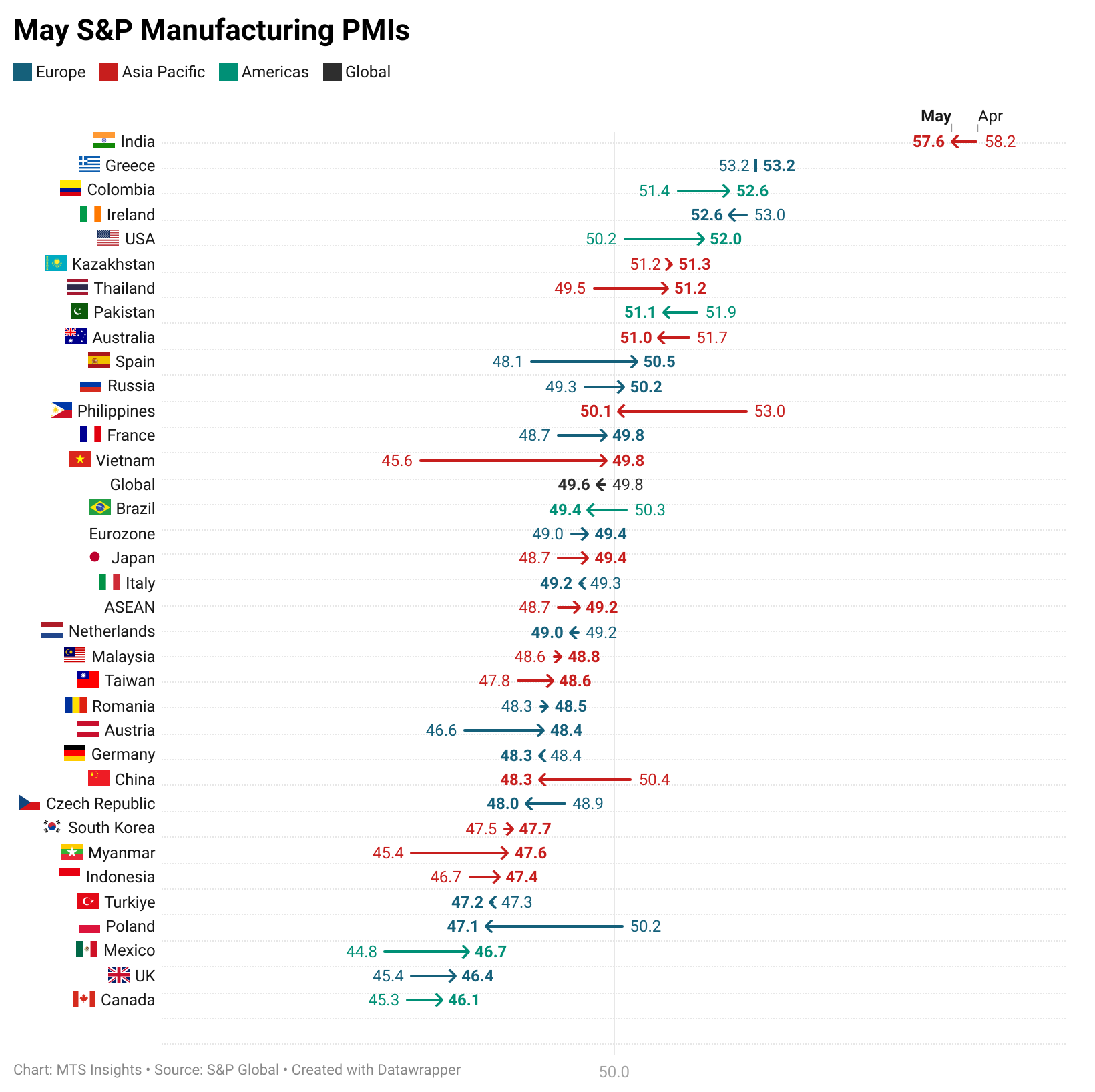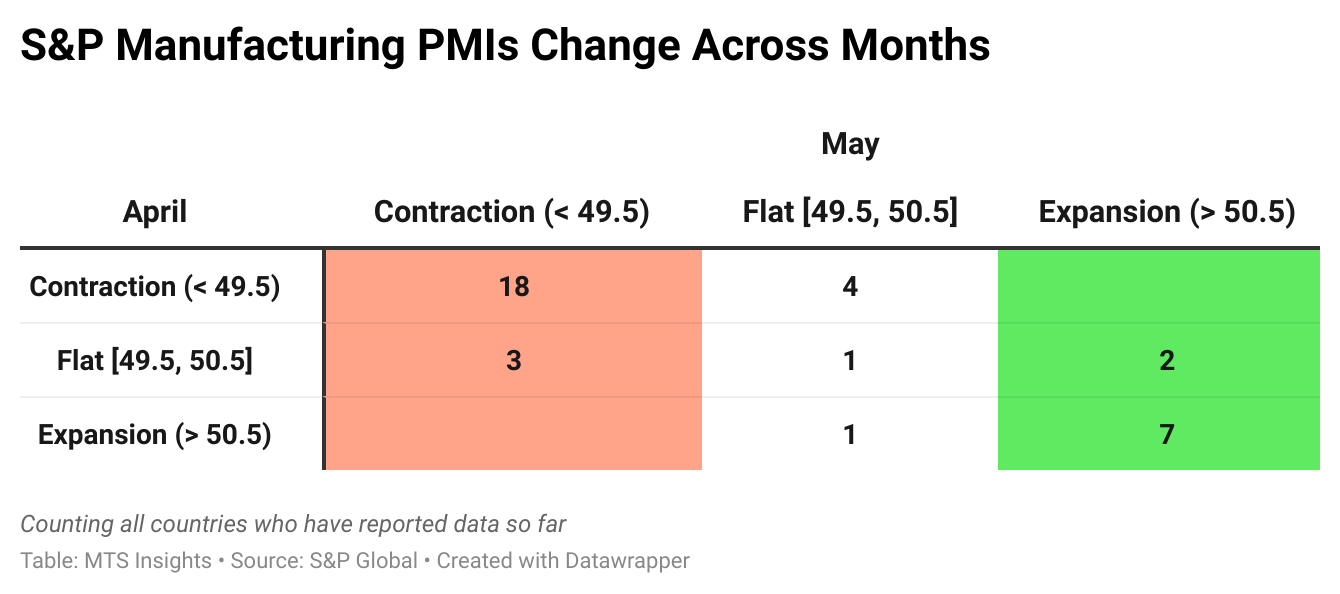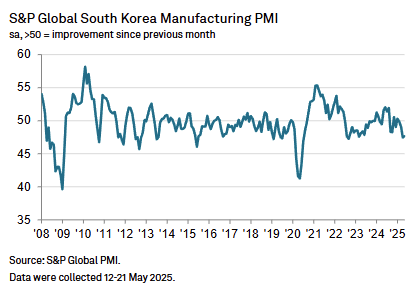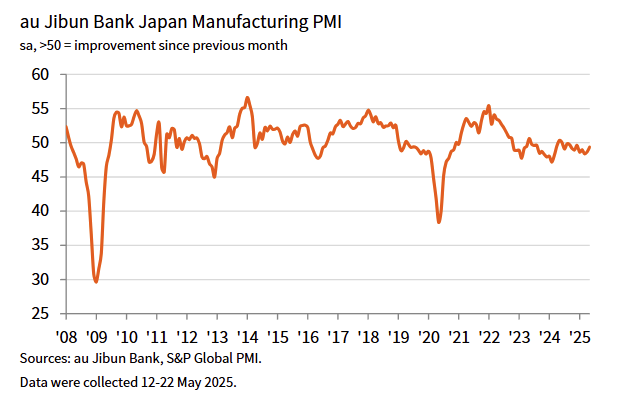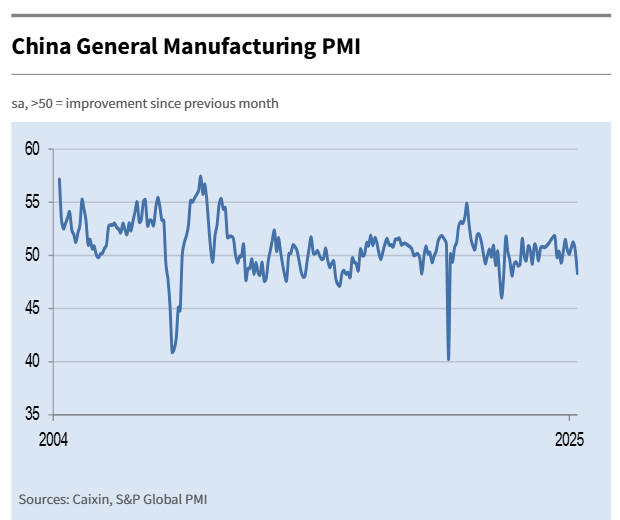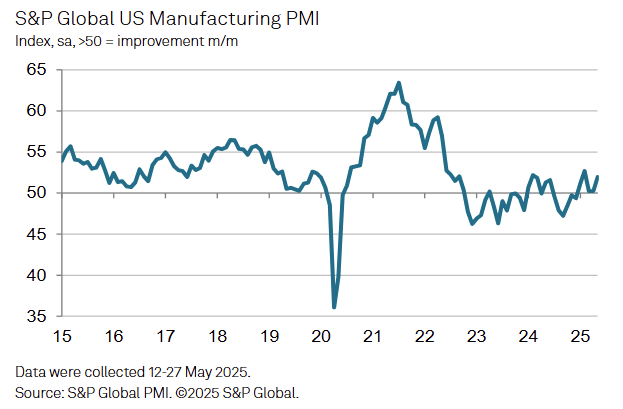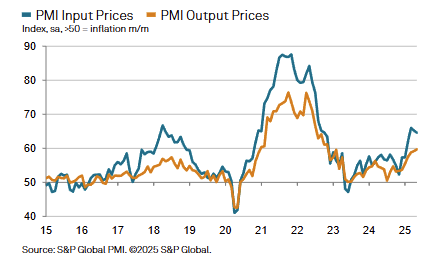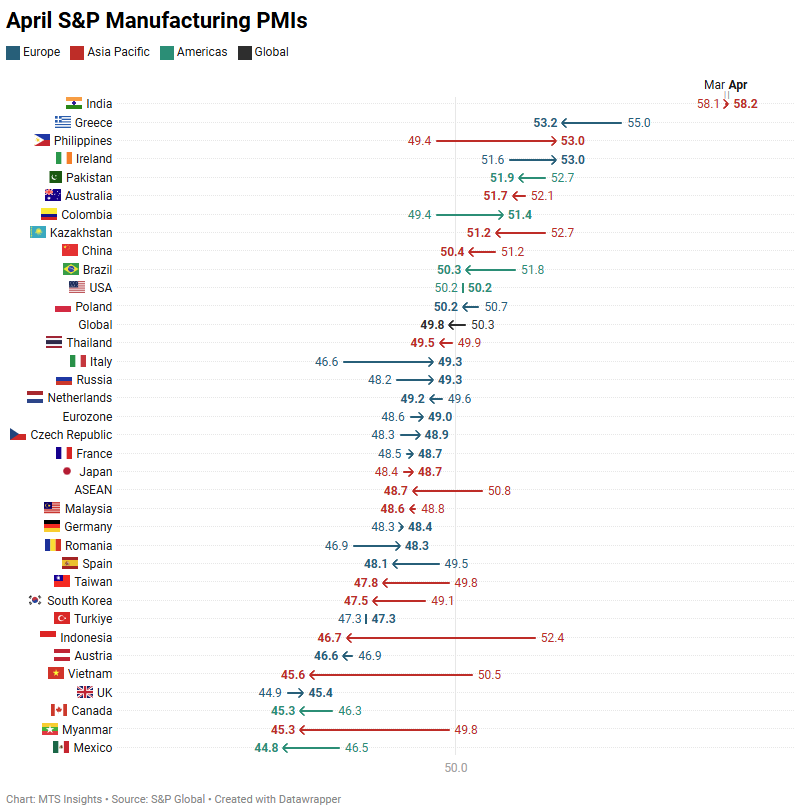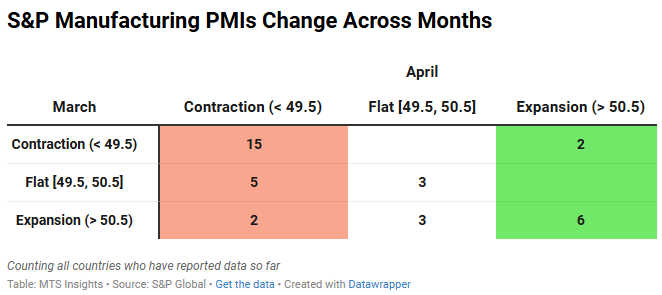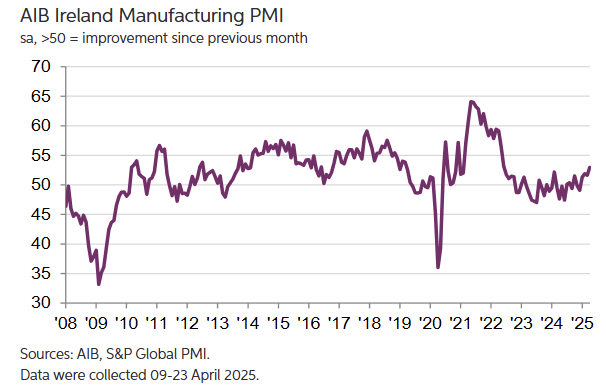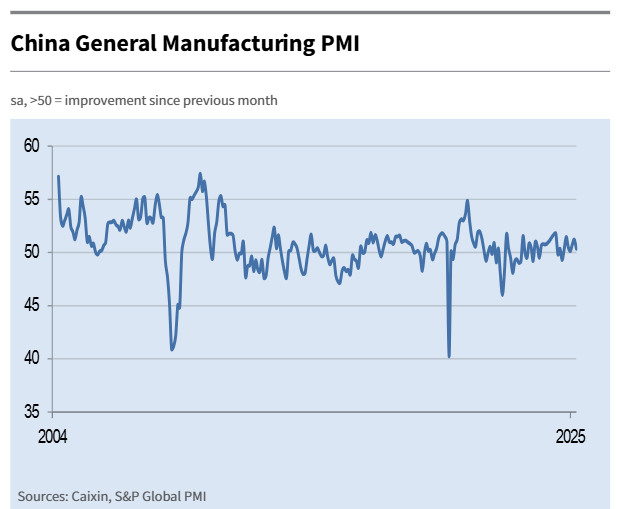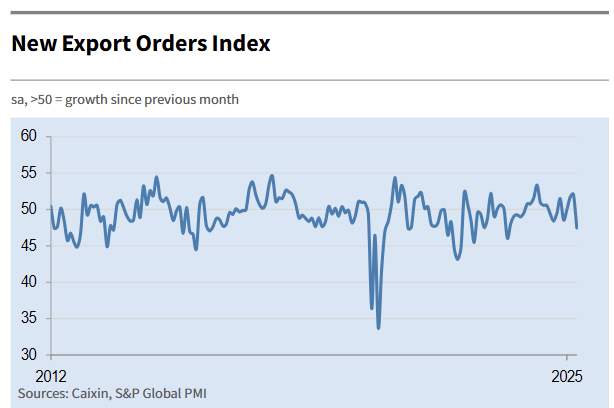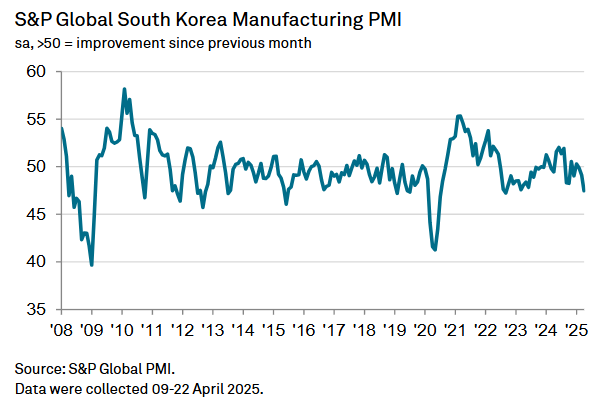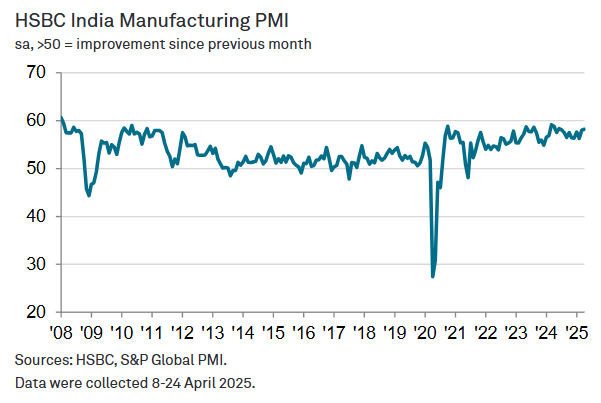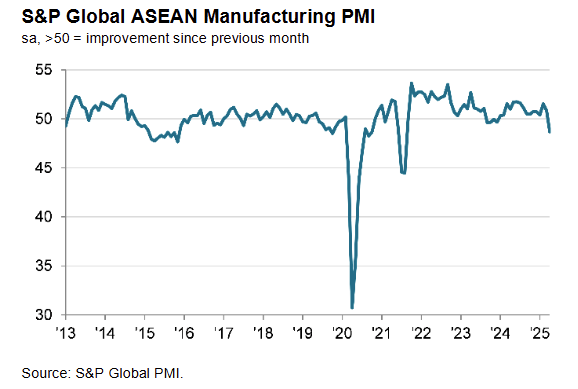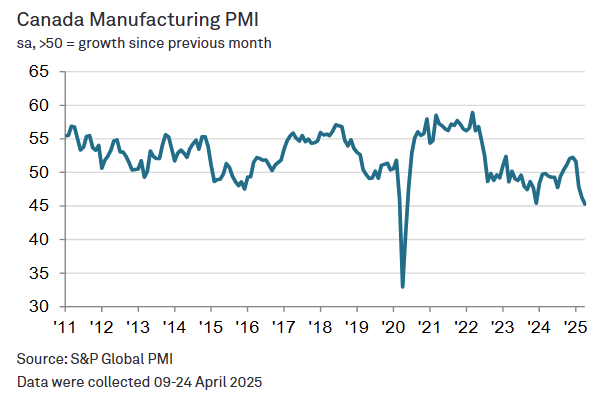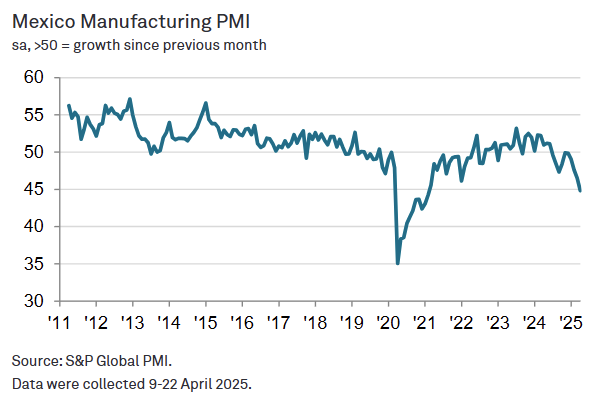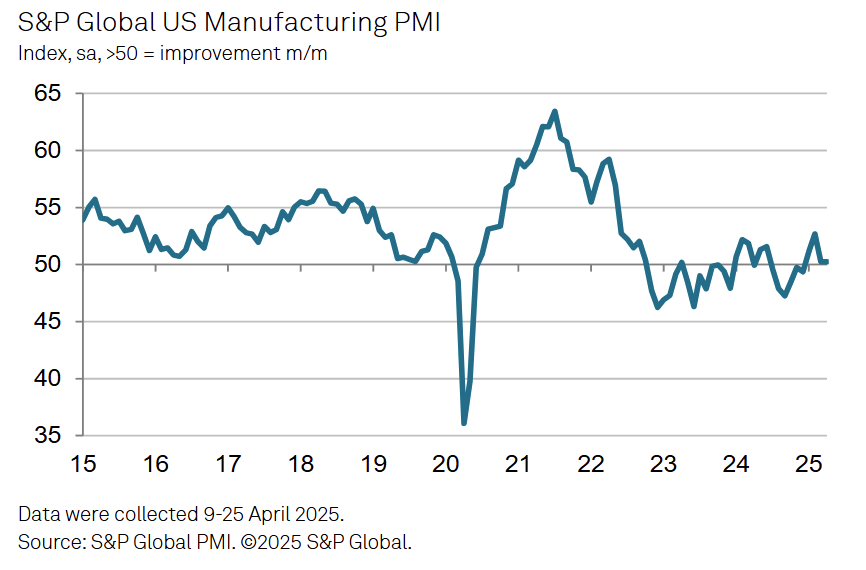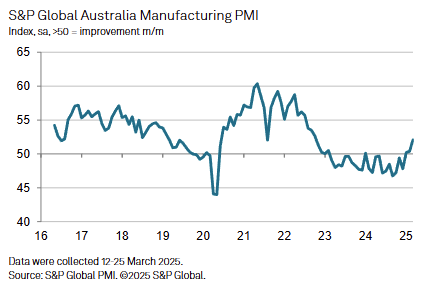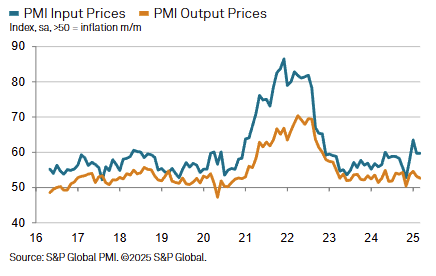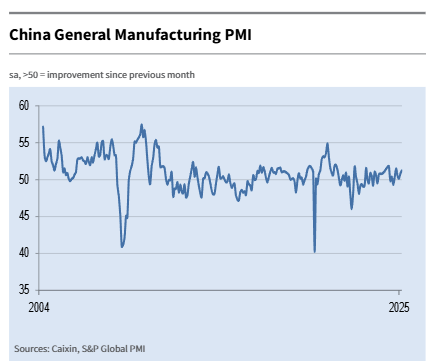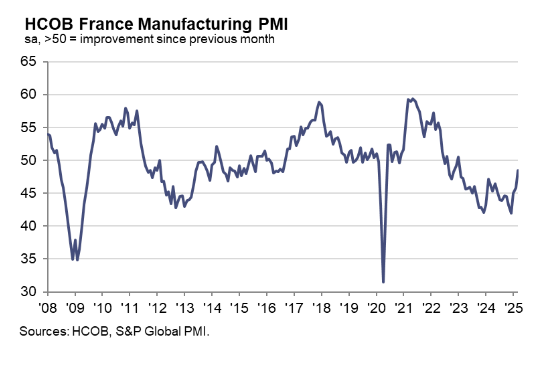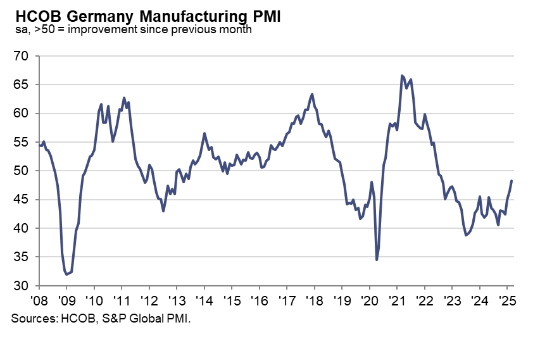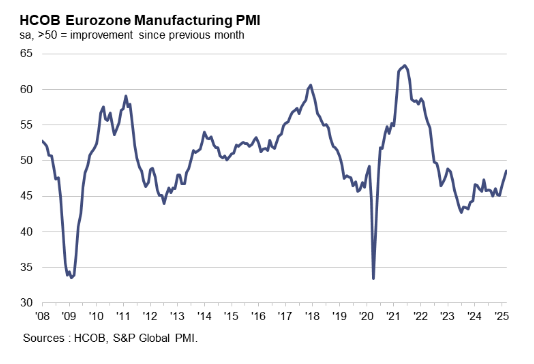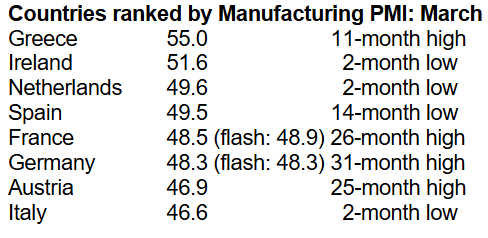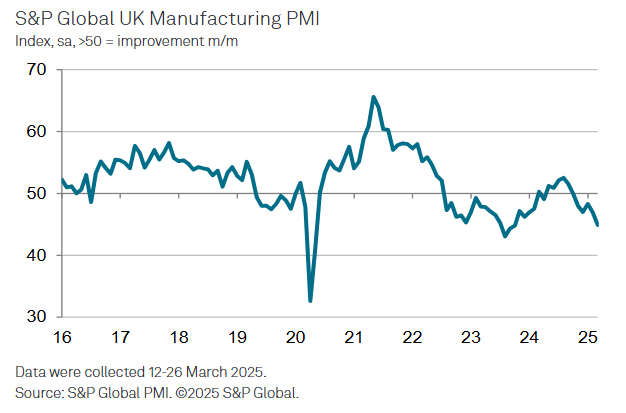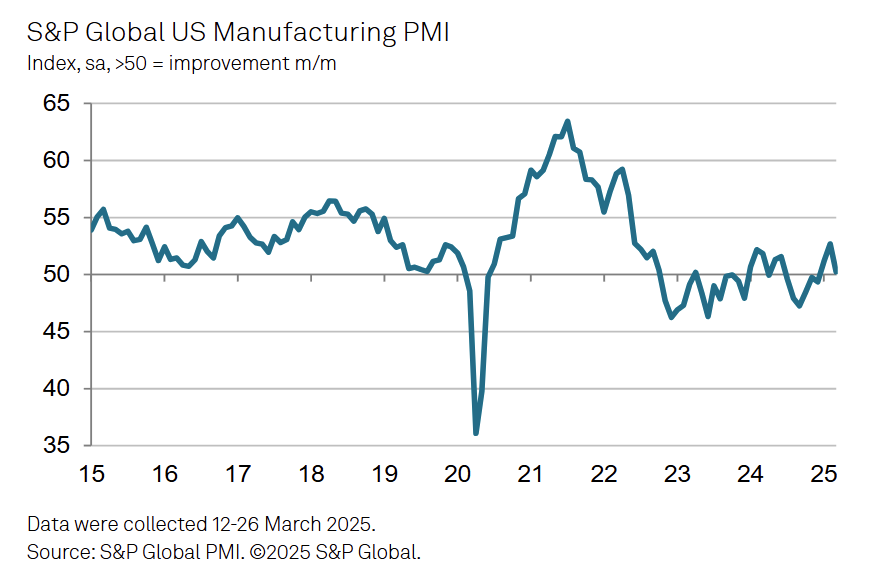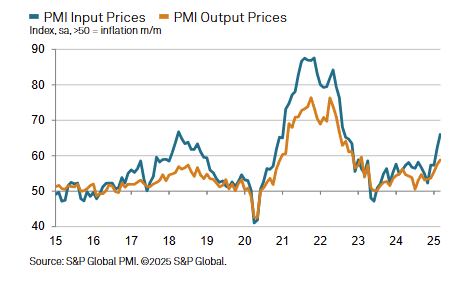 S&P Global Manufacturing PMIs
S&P Global Manufacturing PMIs
- Source
- S&P Global
- Source Link
- https://www.pmi.spglobal.com/
- Frequency
- Monthly
- Next Release(s)
- December 1st, 2025 12:00 AM
-
January 2nd, 2026 12:00 AM
-
February 2nd, 2026 12:00 AM
-
March 2nd, 2026 12:00 AM
-
April 1st, 2026 12:00 AM
-
May 1st, 2026 12:00 AM
-
June 1st, 2026 12:00 AM
-
July 1st, 2026 12:00 AM
-
August 3rd, 2026 12:00 AM
-
September 1st, 2026 12:00 AM
-
October 1st, 2026 12:00 AM
-
November 2nd, 2026 12:00 AM
Latest Updates
-
Global - 11/3/2025
Asia Pacific
- Australia - 11/2/2025
- Malaysia - 11/3/2025
- ASEAN - 11/3/2025
- Myanmar - 11/3/2025
- Philippines - 11/3/2025
- Thailand - 11/3/2025
- Vietnam - 11/3/2025
- Indonesia - 11/3/2025
- Japan - 11/3/2025
- Taiwan - 11/3/2025
- China - 11/3/2025
- India - 11/3/2025
- Russia - 11/1/2025
- Kazakhstan - 11/3/2025
- South Korea - 11/3/2025
- Pakistan - 11/3/2025
Europe
- Austria - 10/29/2025
- Ireland - 11/3/2025
- Netherlands - 11/3/2025
- Romania - 11/3/2025
- Turkiye - 11/3/2025
- Poland - 11/3/2025
- Spain - 11/3/2025
- Czechia - 11/3/2025
- Italy - 11/3/2025
- France - 11/3/2025
- Germany - 11/3/2025
- Eurozone - 11/3/2025
- Greece - 11/3/2025
- UK - 11/3/2025
North & South America
Key Results
China
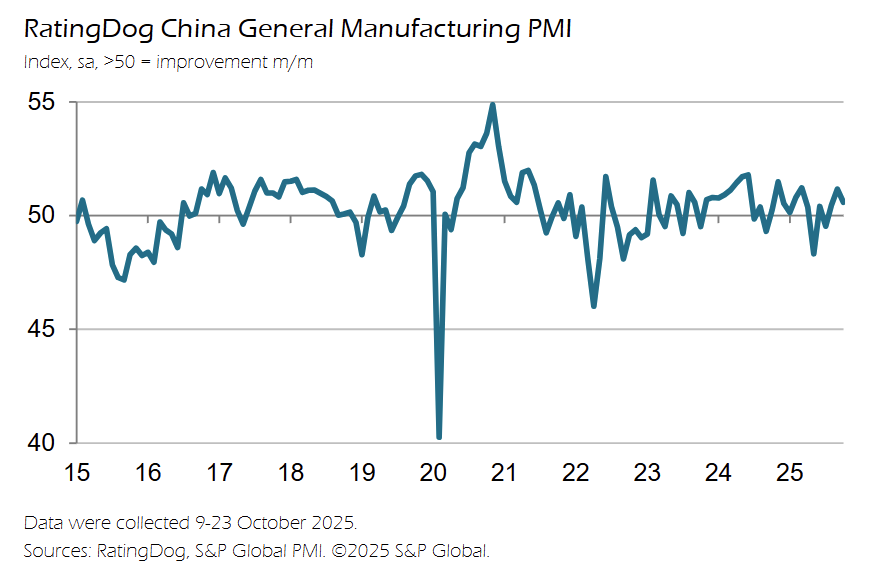
China’s Manufacturing PMI eased to 50.6 in October 2025 (from 51.2 in September), marking a slower but continued expansion in factory activity amid softer domestic demand and renewed weakness in exports.
-
New orders expanded for the fifth consecutive month but at a slower pace, as domestic sales growth was partially offset by a sharper fall in new export orders, which contracted at the fastest rate since May.
-
Output rose modestly, with firms citing slower inflows of new work and trade uncertainty as key drags on production growth.
-
Employment increased for the first time since March and at the fastest pace in over two years, as manufacturers added staff to handle existing workloads despite softer output growth.
-
Purchasing activity grew for the fourth straight month, though the rate of increase moderated; input and finished goods inventories both continued to rise, indicating sustained restocking momentum.
-
Input costs climbed at a slower rate than in September, driven by higher prices for metals and tighter supply conditions, while output prices declined for the second month in a row as firms discounted to stay competitive.
-
Business confidence fell to a six-month low, with survey respondents citing rising trade uncertainty, weaker external demand, and softer expectations for future growth.
-
The overall PMI composition showed only employment improving month-on-month, while production, new orders, and purchasing activity all eased, signaling a moderation in the pace of recovery heading into year-end.
Euro Area

The Eurozone Manufacturing PMI held at 50.0 in October 2025 (from 49.8 in September), marking a near-stagnation in factory activity as modest output growth continued to offset weak demand and ongoing job cuts.
-
Manufacturing output rose for the eighth straight month, with the Output Index at 51.0 (from 50.9), but the pace of expansion remained mild and below average for the year.
-
New orders were flat for the second consecutive month, continuing a weak trend as demand for euro area goods has risen in only one of the past 42 months; new export orders declined for the fourth month in a row.
-
Employment fell again, extending the run of job losses to nearly two and a half years, with the October decline the sharpest since June.
-
Inventories of both inputs and finished goods declined further, continuing a prolonged period of stock drawdowns as firms sought to manage weak demand and excess capacity.
-
Input costs were unchanged from September, while selling prices rose marginally for the first time since April, suggesting limited pricing power despite stable costs.
-
Supplier delivery times lengthened for the third straight month, with the extent of delays the most widespread in three years amid lingering supply chain disruptions.
-
Business sentiment remained positive but slipped for the second month in a row, staying below its long-term average as firms cited weak demand and geopolitical uncertainty.
-
By country, Greece (53.5) and Spain (52.1) led growth, while Germany (49.6), France (48.8), and Austria (48.8) remained in contraction, highlighting uneven recovery across the euro area.
UK
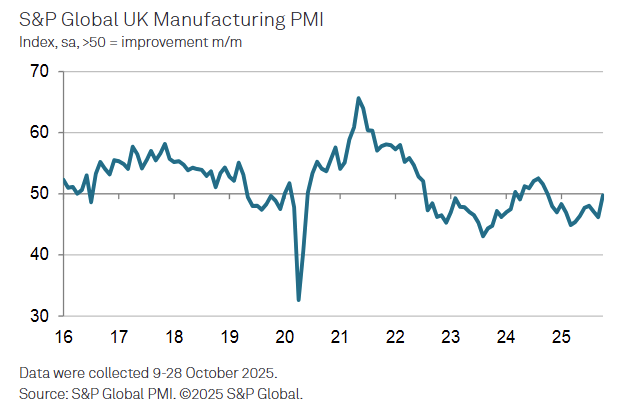
The UK Manufacturing PMI rose to 49.7 in October 2025 (from 46.2 in September), marking a 12-month high and the first rise in output in a year, driven partly by the restart of auto production following a cyber-attack at JLR.
-
Output increased across consumer and intermediate goods sectors, while investment goods output fell for a twelfth month, though at the slowest pace in the current downturn.
-
New orders contracted for a thirteenth straight month, but at a slower rate, with all sectors still seeing declines amid continued weakness in both domestic and overseas demand.
-
New export orders fell for the forty-fifth consecutive month, with manufacturers citing weaker demand from the US, EU, Asia, and the Middle East, alongside ongoing tariff uncertainty and competitiveness issues.
-
Employment declined for the twelfth consecutive month, though at the weakest pace in the current sequence, as firms relied on attrition and hiring freezes to manage costs amid subdued demand and high labor expenses.
-
Input costs rose at the slowest pace so far in 2025, easing in consumer and intermediate goods but rising for investment goods; higher prices were reported for energy, commodities, and shipping.
-
Selling prices increased modestly as some firms passed on higher costs, though overall inflationary pressures continued to moderate.
-
Business optimism improved to an eight-month high but remained below its long-run average, as firms balanced hopes for economic recovery and new product launches against concerns over fiscal policy, tariffs, and geopolitical uncertainty.
US
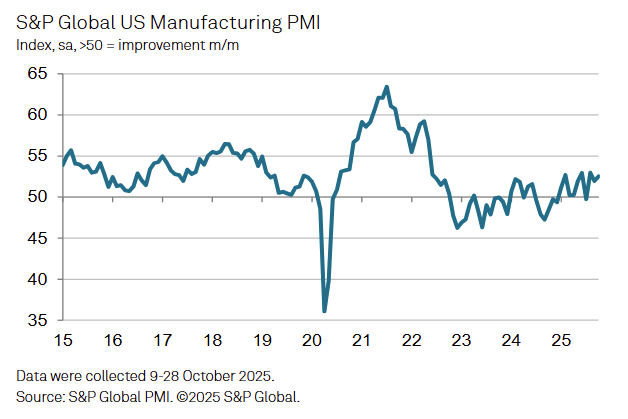
The US Manufacturing PMI rose to 52.5 in October 2025 (from 52.0 in September), marking a third consecutive month of expansion and the fastest pace of demand growth in 20 months.
-
New orders increased at the quickest rate in 20 months, supported by stronger domestic demand, while new export orders fell for the fourth straight month and at the sharpest pace since July amid ongoing tariff impacts.
-
Output grew solidly, driven by rising domestic orders and sufficient production capacity, though some manufacturers reported excess output relative to workloads.
-
Employment rose modestly for the third consecutive month but remained limited by weak confidence and spare capacity; backlogs of work declined at the fastest rate since April.
-
Inventories of finished goods surged to a survey-record high, marking a third straight month of accumulation, as firms built up stock due to slower-than-expected sales.
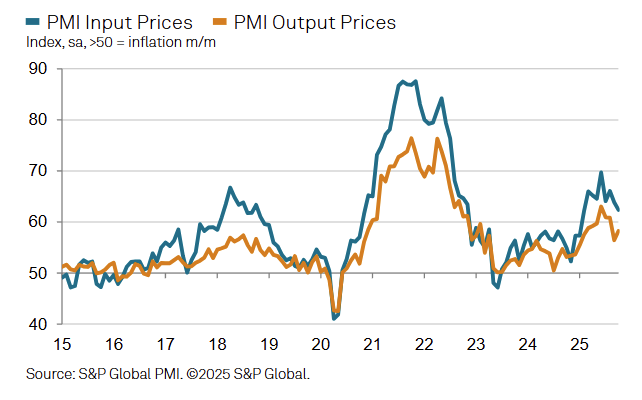
-
Input prices continued to rise steeply, with tariffs cited as a key driver, though the rate of inflation was the lowest since February; selling prices were raised at a faster pace than in September.
-
Supplier delivery times lengthened again, reflecting ongoing transportation delays, import challenges, and low stock availability among suppliers.
-
Business confidence fell to its lowest level since April, weighed down by trade policy uncertainty, the federal shutdown, and concerns about consumer demand, despite some optimism linked to reshoring and future investment.

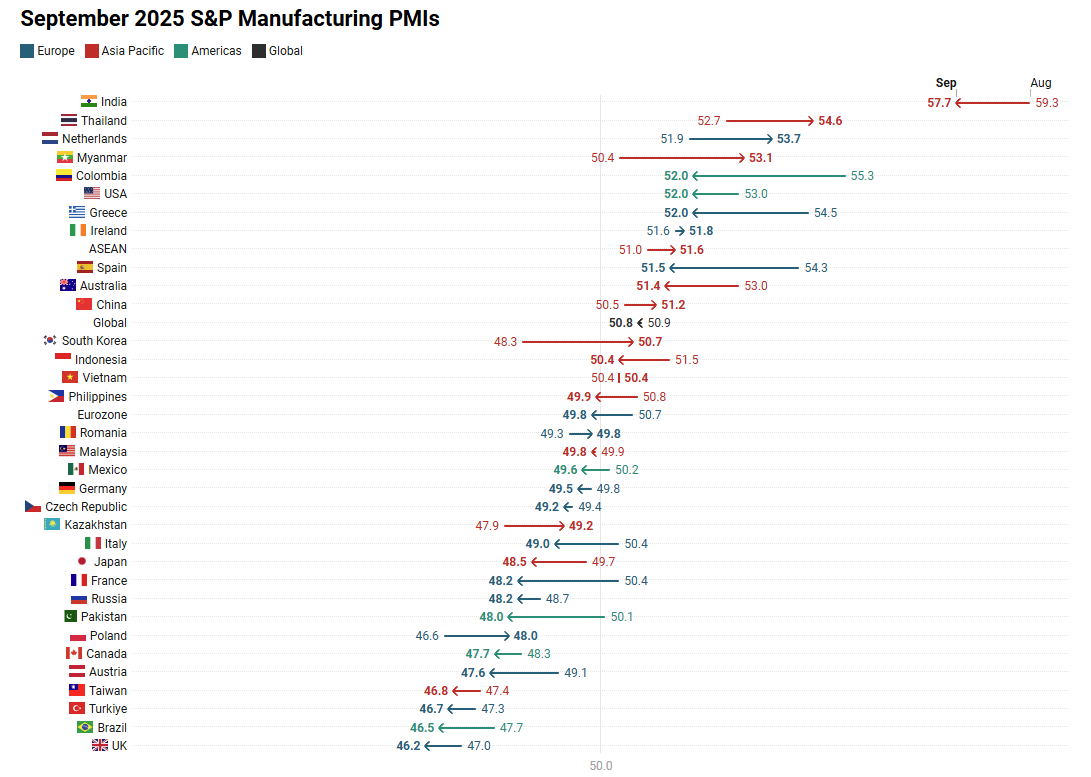
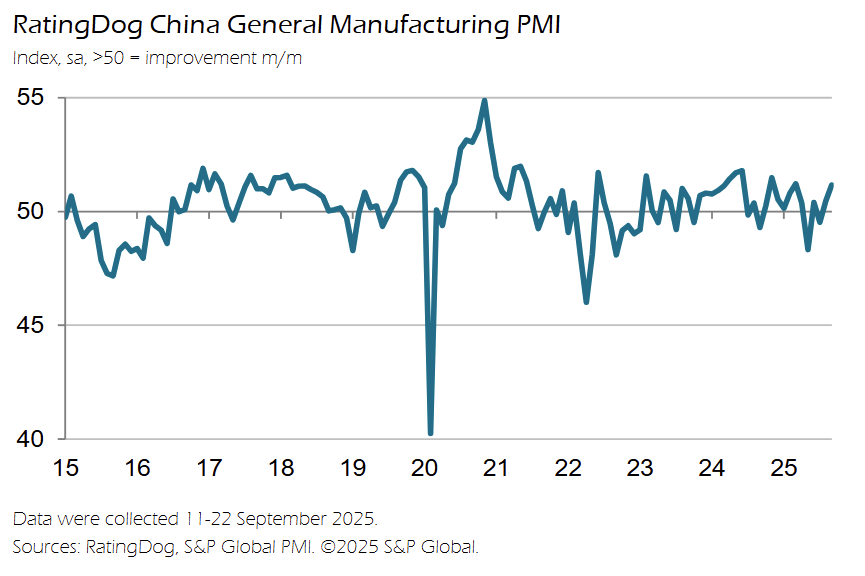


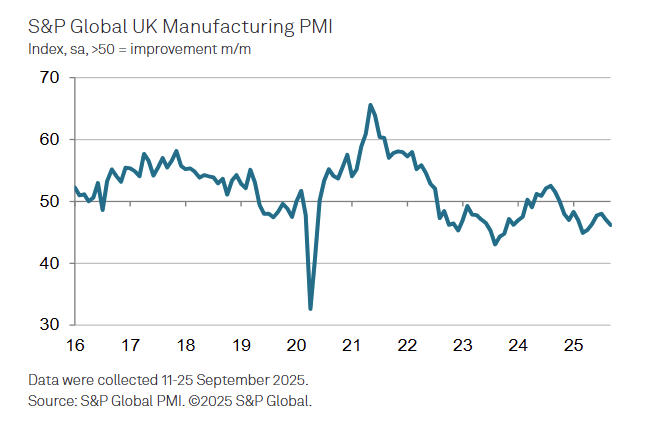
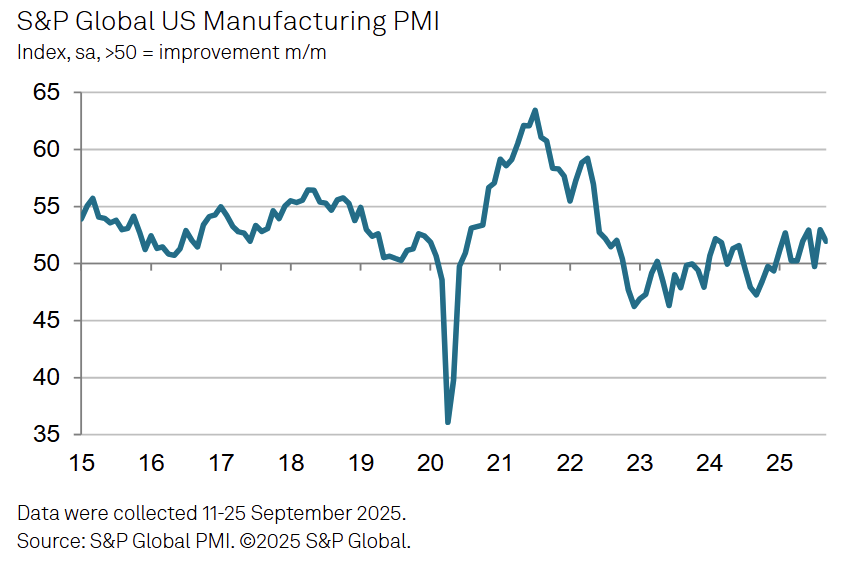
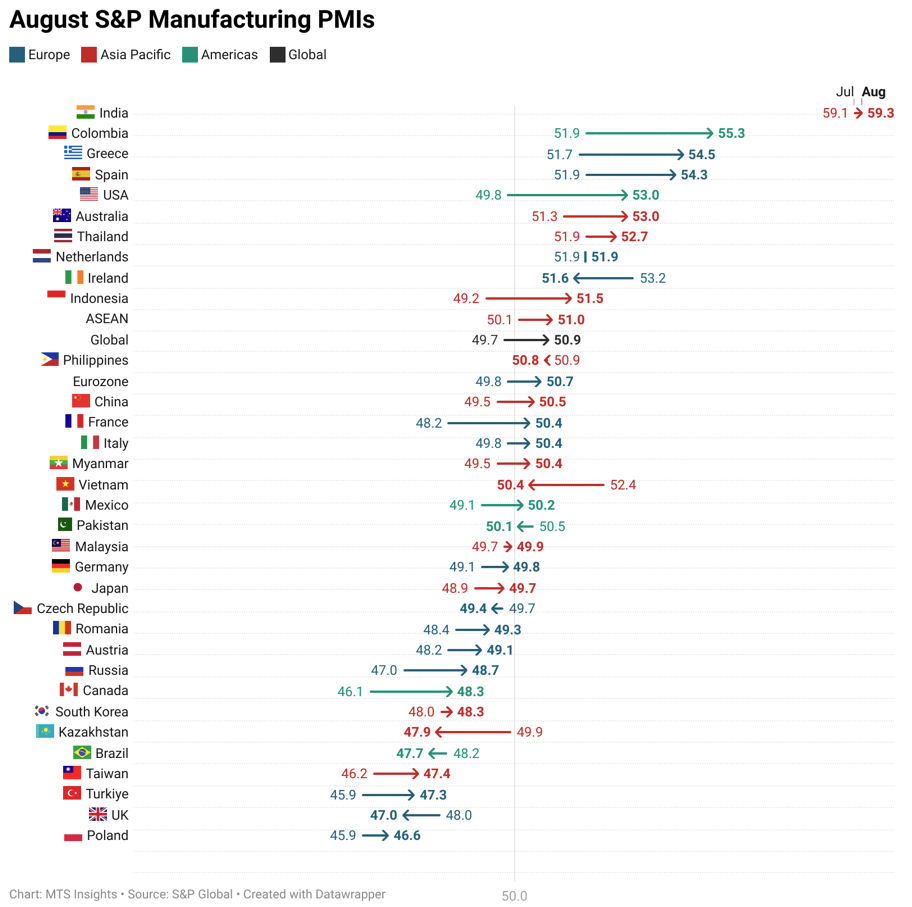
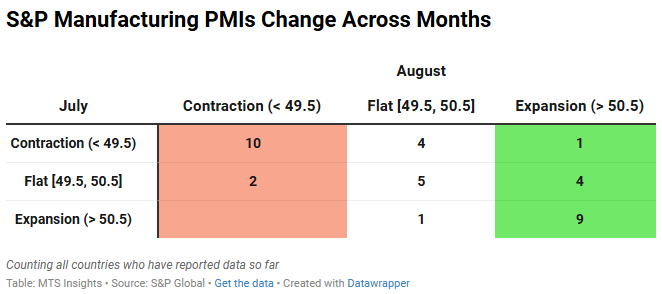
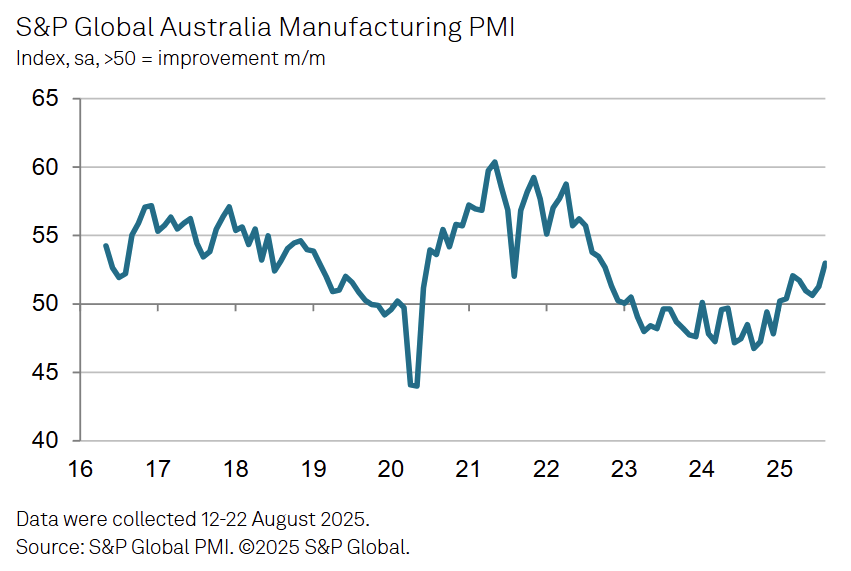

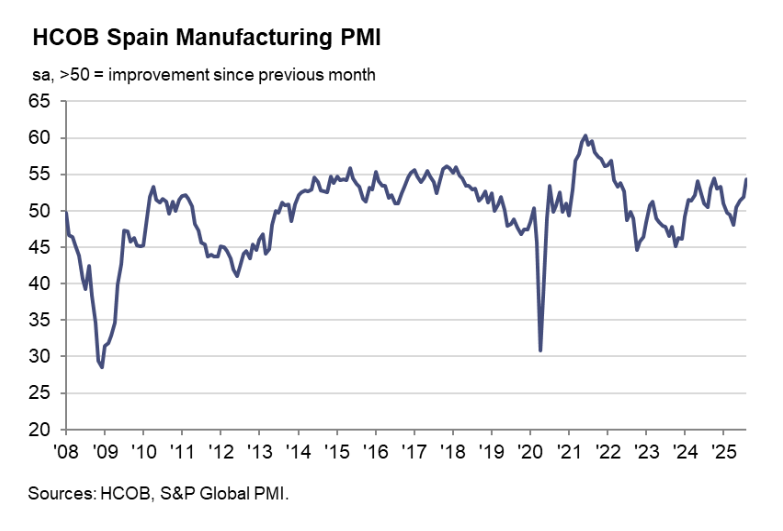
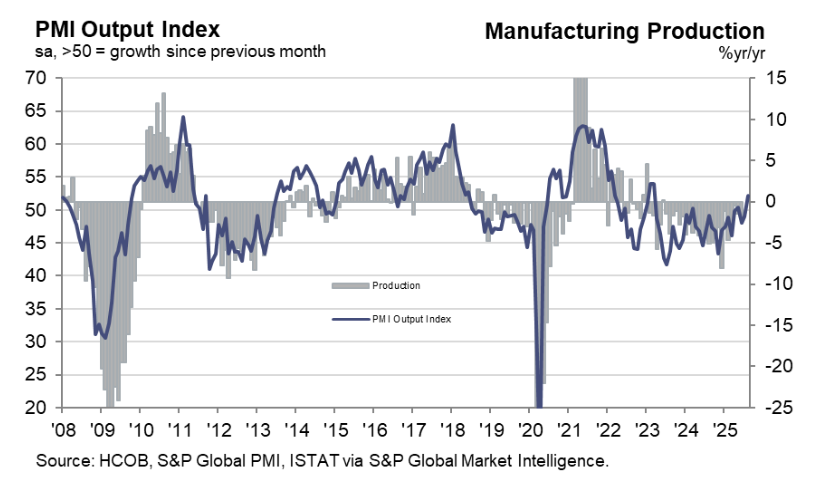
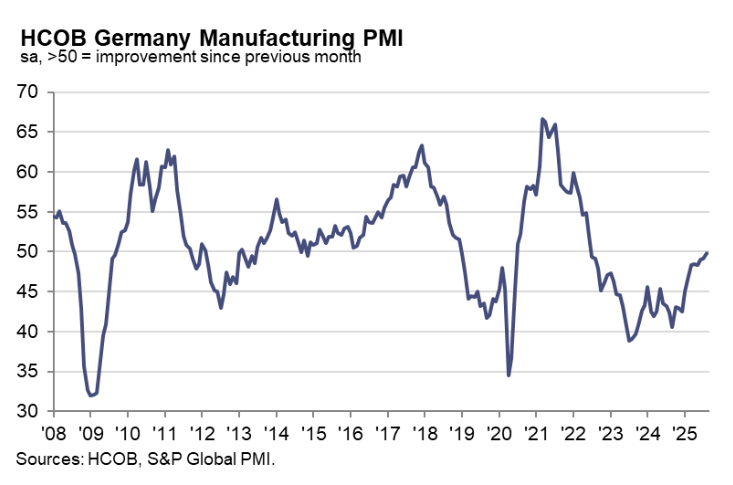
 The Eurozone Manufacturing PMI rose to 50.7 in August 2025 (from 49.8 in July), the first expansion since June 2022, driven by the strongest output growth in over three years and a rebound in new orders.
The Eurozone Manufacturing PMI rose to 50.7 in August 2025 (from 49.8 in July), the first expansion since June 2022, driven by the strongest output growth in over three years and a rebound in new orders.